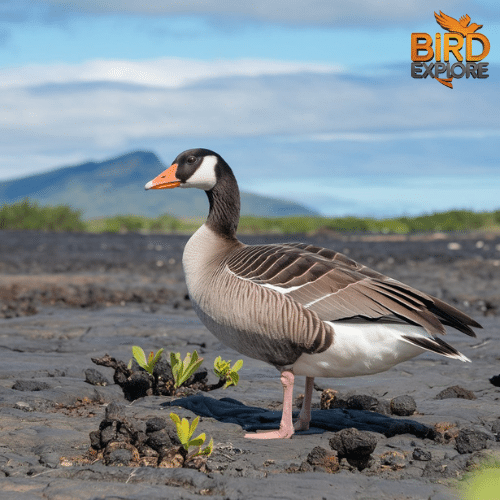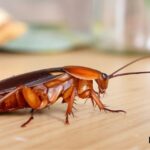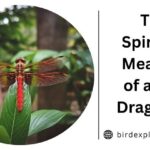Birdwatching opens a fascinating window into the lives of avian species. Among the rich variety of birds, those whose names start with “N” offer unique insights into the beauty and diversity of nature. In this article, we’ll delve into an array of bird species that start with “N,” highlighting their habitats, behaviors, and ecological significance.
Introduction
Birds are remarkable creatures, each contributing to the ecosystem in distinct ways. Whether you’re an avid birdwatcher or just starting to explore avian life, understanding the characteristics of these species can enhance your appreciation for the natural world.
From the vibrant Northern Cardinal to the elusive Nightingale, the birds we will discuss showcase the incredible variety found in nature. Let’s embark on this journey to discover the wonders of birds whose names begin with “N.”
1. Northern Cardinal

Description and Identification
The Northern Cardinal is easily recognizable by its striking red plumage, especially in males. Females display a more subdued brownish hue, accented with warm red highlights. Adult males measure about 9-12 inches in length, boasting a distinctive crest and a robust, orange-red bill.
Habitat and Range
These birds primarily inhabit the eastern United States and parts of Mexico. They thrive in diverse environments, including woodlands, gardens, and shrublands. Their adaptability to urban areas makes them a common sight in backyards.
Diet and Feeding Habits
Northern Cardinals are omnivorous, feeding on a varied diet of seeds, fruits, and insects. They are particularly fond of sunflower seeds, which are often a staple in bird feeders.
Behavior and Social Structure
Cardinals are known for their social behavior, often seen in pairs. They are also quite vocal, with males singing to establish territory and attract mates. Their clear, whistled songs add a melodic touch to their environments.
Reproduction and Lifespan
The breeding season typically occurs in spring, with females laying 2-5 eggs. Both parents are involved in raising the chicks, which fledge about 10-20 days after hatching. Northern Cardinals can live up to 15 years in the wild.
2. Nighthawk

Description and Identification
The Nighthawk is a nocturnal bird with a slender body and long wings, typically measuring about 9-10 inches. Their plumage is mottled brown and gray, providing excellent camouflage during the day.
Habitat and Range
Nighthawks are migratory, found across North America, from Canada to Central America. They prefer open areas, such as fields and urban environments, where they can hunt for insects.
Diet and Feeding Habits
As insect feeders, Nighthawks primarily consume moths and beetles, catching them mid-air with their wide mouths. They are known for their acrobatic flight patterns, which allow them to effectively snatch prey while flying.
Behavior and Social Structure
Nighthawks are generally solitary or found in small groups. During the breeding season, males perform aerial displays to attract females, showcasing their unique flight abilities.
Reproduction and Lifespan
Nighthawks lay their eggs directly on the ground, usually in gravel or sandy areas. The incubation lasts about 18-20 days, and chicks are precocial, able to leave the nest shortly after hatching.
3. Nutcracker

Description and Identification
The Nutcracker, a member of the crow family, measures about 12-14 inches in length. They have striking black-and-white plumage with a distinctive large bill, ideal for cracking open seeds.
Habitat and Range
Nutcrackers are commonly found in coniferous forests, particularly in the western United States and Canada. They play a crucial role in forest ecosystems by dispersing seeds, particularly from pine trees.
Diet and Feeding Habits
Primarily feeding on pine seeds, Nutcrackers also consume insects and berries. They have a remarkable memory, allowing them to cache food for later use.
Behavior and Social Structure
These birds are social and often found in flocks outside the breeding season. They communicate through a variety of calls, and their social structure can change with seasonal shifts.
Reproduction and Lifespan
Nutcrackers typically nest in high tree branches, laying 2-5 eggs. Both parents are involved in chick-rearing, and the young fledge after about three weeks. They can live up to 10 years in the wild.
4. Nightingale

Description and Identification
The Nightingale is renowned for its singing abilities, often celebrated in poetry and music. Adults are small, measuring about 5-6 inches, with a warm brown plumage.
Habitat and Range
Nightingales are migratory birds found in Europe and parts of Asia during the breeding season. They prefer dense shrubbery and woodlands, making them somewhat elusive.
Diet and Feeding Habits
These birds primarily feed on insects, fruits, and berries. Their diet shifts depending on the season, reflecting their adaptability.
Behavior and Social Structure
Nightingales are solitary singers, with males using their melodious voices to attract females and defend territories. Their songs are particularly prominent during the night, contributing to their reputation.
Reproduction and Lifespan
The breeding season typically occurs in spring, with females laying 4-6 eggs in a ground nest. The incubation lasts about 12-14 days, and the young leave the nest within two weeks. Nightingales can live up to 5 years in the wild.
5. Nene (Hawaiian Goose)

Description and Identification
The Nene, or Hawaiian Goose, is unique to Hawaii and serves as the state bird. It has a distinct appearance, with a brownish body and a black head, measuring about 24-28 inches in length.
Habitat and Range
Nenes inhabit volcanic slopes and grasslands, primarily on the islands of Hawaii, Maui, and Kauai. Their limited range makes them particularly vulnerable to habitat loss.
Diet and Feeding Habits
Nenes primarily feed on grasses, leaves, and fruits. Their grazing habits help maintain the health of their native habitats.
Behavior and Social Structure
Nenes are social birds, often found in pairs or small groups. They are known for their strong pair bonds and cooperative parenting.

Reproduction and Lifespan
Breeding occurs from late fall to early spring. Females lay 2-5 eggs in a simple nest on the ground. The chicks are precocial and can walk shortly after hatching. Nenes can live up to 20 years in the wild.
6. Northern Flicker

Description and Identification
The Northern Flicker is a type of woodpecker known for its striking markings, including a black crescent on its chest and spotted underparts. Adults measure around 11-12 inches long.
Habitat and Range
Found across North America, Northern Flickers prefer open woodlands, parks, and residential areas. Their adaptability to various environments makes them a common sight.
Diet and Feeding Habits
Unlike many woodpeckers, Northern Flickers often feed on the ground, primarily consuming ants and beetles. They also enjoy fruits and seeds, showcasing their versatility in feeding.
Behavior and Social Structure
These birds are often solitary or found in pairs, especially during the breeding season. They use a series of distinctive calls to communicate and establish territory.
Reproduction and Lifespan
Nesting occurs in tree cavities, with females laying 4-8 eggs. Both parents care for the young, which fledge about 25 days after hatching. Flickers can live up to 9 years in the wild.
7. Northern Goshawk

Description and Identification
The Northern Goshawk is a powerful predator, measuring about 20-24 inches in length. It has striking gray plumage, with a distinctive white eyebrow and thick legs, making it a formidable hunter.
Habitat and Range
Goshawks inhabit dense forests across North America, Europe, and Asia. They prefer areas with a mix of open space and cover, essential for hunting.
Diet and Feeding Habits
As apex predators, Northern Goshawks primarily feed on birds and small mammals. Their hunting strategy involves swift, agile flights through dense foliage.
Behavior and Social Structure
These birds are highly territorial, with males engaging in elaborate displays to attract females. They are known for their aggressive behavior during the breeding season.
Reproduction and Lifespan
Goshawks typically nest in tall trees, laying 2-5 eggs. The female incubates the eggs, and both parents care for the chicks, which fledge after about 5-6 weeks. They can live up to 10 years in the wild.
8. Noddy

Description and Identification
The Noddy is a seabird known for its distinctive appearance and behavior. These birds measure about 13-16 inches, with a dark gray body and white cap.
Habitat and Range
Noddies are often found in tropical and subtropical regions, nesting on coastal islands. They prefer sandy or rocky shores for breeding.
Diet and Feeding Habits
Noddies primarily feed on fish and marine invertebrates, often foraging in groups. Their feeding technique involves diving into the water from the air.
Behavior and Social Structure
These social birds nest in colonies, displaying cooperative breeding behaviors. They communicate through various calls and have strong pair bonds.
Reproduction and Lifespan
Noddies typically lay one egg per breeding season, with both parents sharing incubation duties. Chicks are altricial, requiring significant parental care before fledging.
9. New Holland Honeyeater

Description and Identification
The New Holland Honeyeater is a vibrant Australian bird, recognized by its striking yellow and black plumage. Adults measure about 7-8 inches in length.
Habitat and Range
These birds inhabit coastal forests and gardens across eastern and southern Australia. Their preference for flowering plants makes them a vital part of the ecosystem.
Diet and Feeding Habits
As nectar feeders, New Holland Honeyeaters primarily consume nectar from various flowers. They also eat insects, particularly during the breeding season.
Behavior and Social Structure
These birds are highly social, often seen in small flocks. Their vocalizations play an essential role in communication within groups.
Reproduction and Lifespan
Breeding typically occurs in spring, with females laying 2-3 eggs in a tree nest. Both parents are involved in raising the chicks, which fledge about two weeks after hatching. They can live up to 7 years in the wild.
10. Nicobar Pigeon

Description and Identification
The Nicobar Pigeon is a striking bird with iridescent plumage, measuring about 14-16 inches. Its unique appearance includes a long, flowing tail and bright green and blue feathers.
Habitat and Range
Endemic to Southeast Asia, Nicobar Pigeons inhabit tropical forests and mangroves. Their limited range contributes to their vulnerable conservation status.
Diet and Feeding Habits
These pigeons primarily feed on fruits, seeds, and nuts. They are known for their foraging behavior, often seen walking on the forest floor.
Behavior and Social Structure
Nicobar Pigeons are generally social, often found in small flocks. Their communication involves soft coos and displays during courtship.
Reproduction and Lifespan
Breeding occurs year-round, with females laying one egg. Both parents incubate the egg, and the chick is cared for until it can fend for itself. Nicobar Pigeons can live up to 15 years in the wild.
11. Nuthatch

Description and Identification
The Nuthatch is a small forest bird, measuring about 5-6 inches. They have a distinctive blue-gray color and a characteristic ability to climb down trees headfirst.
Habitat and Range
Nuthatches are found in wooded areas across North America, Europe, and Asia. They thrive in deciduous and mixed forests, where they can forage for food.
Diet and Feeding Habits
These birds primarily feed on seeds, nuts, and insects. Their unique foraging behavior involves wedging food into tree bark to access it later.
Behavior and Social Structure
Nuthatches are known for their curious and social nature. They often form small flocks outside the breeding season, communicating with a variety of calls.
Reproduction and Lifespan
Nuthatches typically nest in tree cavities, laying 5-8 eggs. Both parents participate in feeding the chicks, which fledge after about 30 days. They can live up to 10 years in the wild.
Conclusion
Exploring the world of birds names that start with N reveals the incredible variety and adaptability of avian life. From the striking Northern Cardinal to the melodious Nightingale, each species plays a vital role in its ecosystem. Whether you’re birdwatching in your backyard or venturing into the wild, understanding these species enhances your appreciation for nature’s wonders. As you continue your journey in bird identification, remember the importance of conservation efforts to protect these remarkable creatures and their habitats. Happy birdwatching!

Kay Lovely is a dedicated writer for Bird Explore, where she brings the latest celebrity news and net worth updates to life. With a passion for pop culture and a keen eye for detail, Kay delivers engaging and insightful content that keeps readers informed about their favorite stars. Her extensive knowledge of the entertainment industry and commitment to accuracy make her a trusted voice in celebrity journalism.







